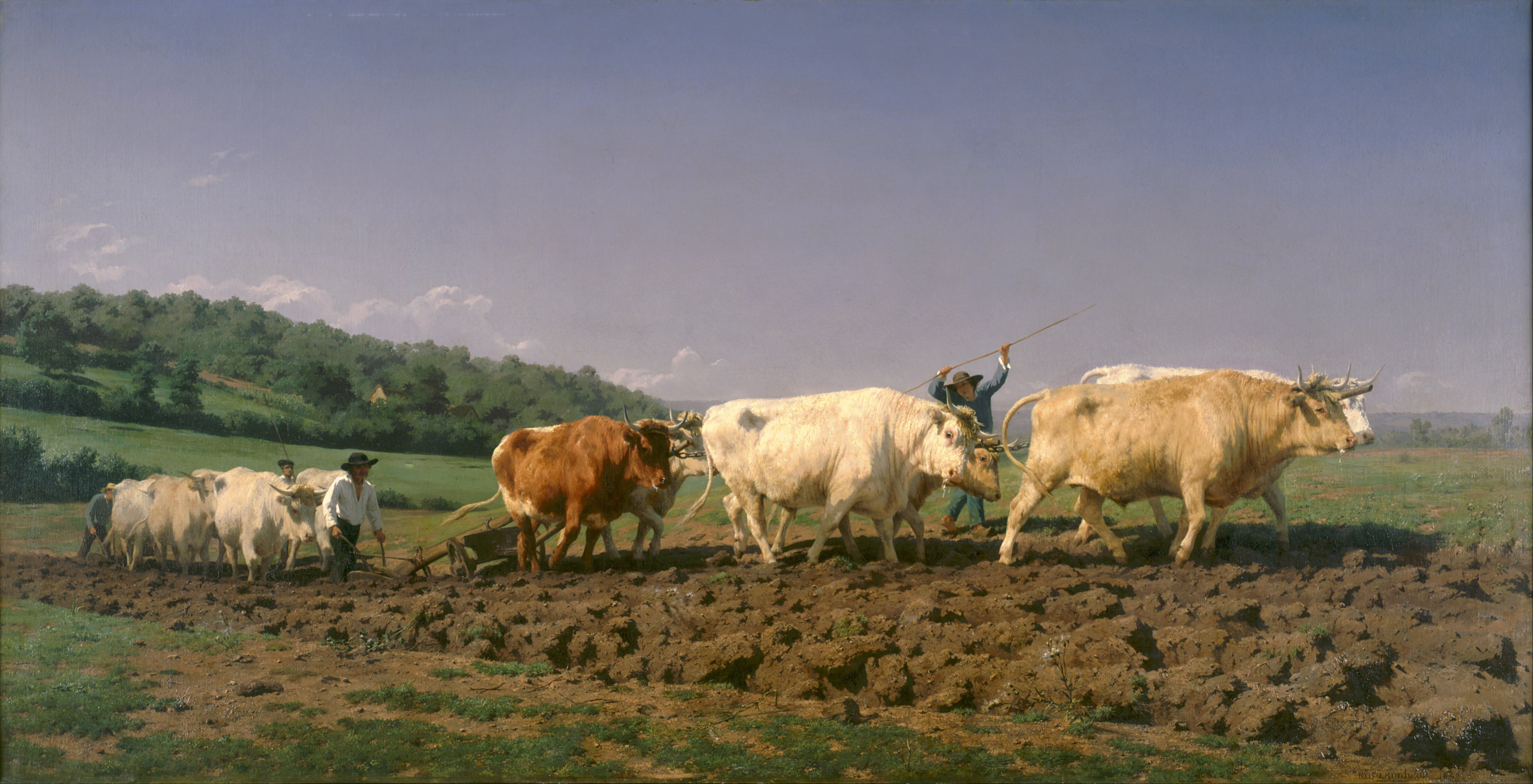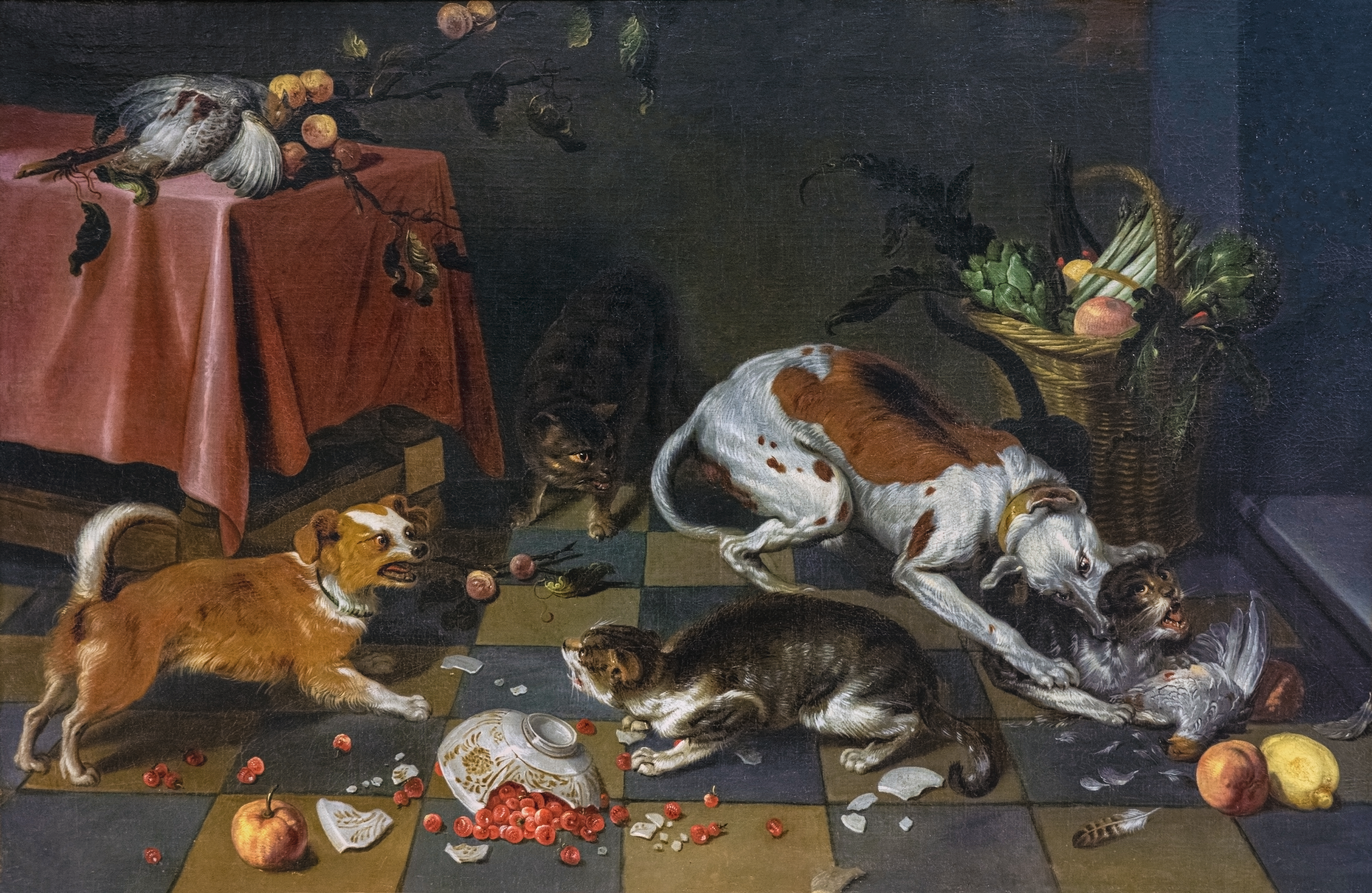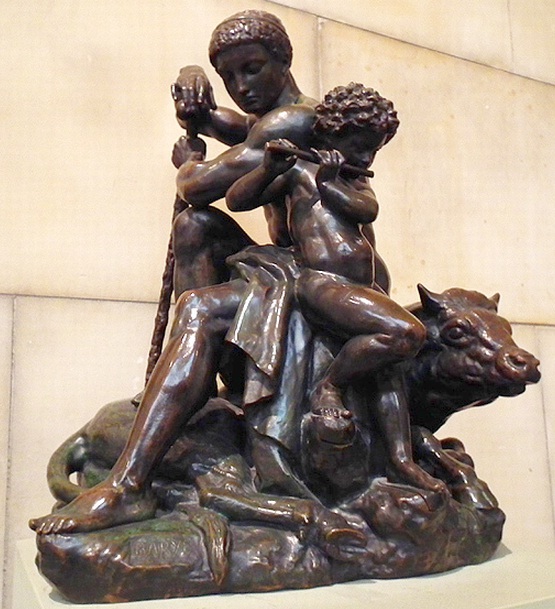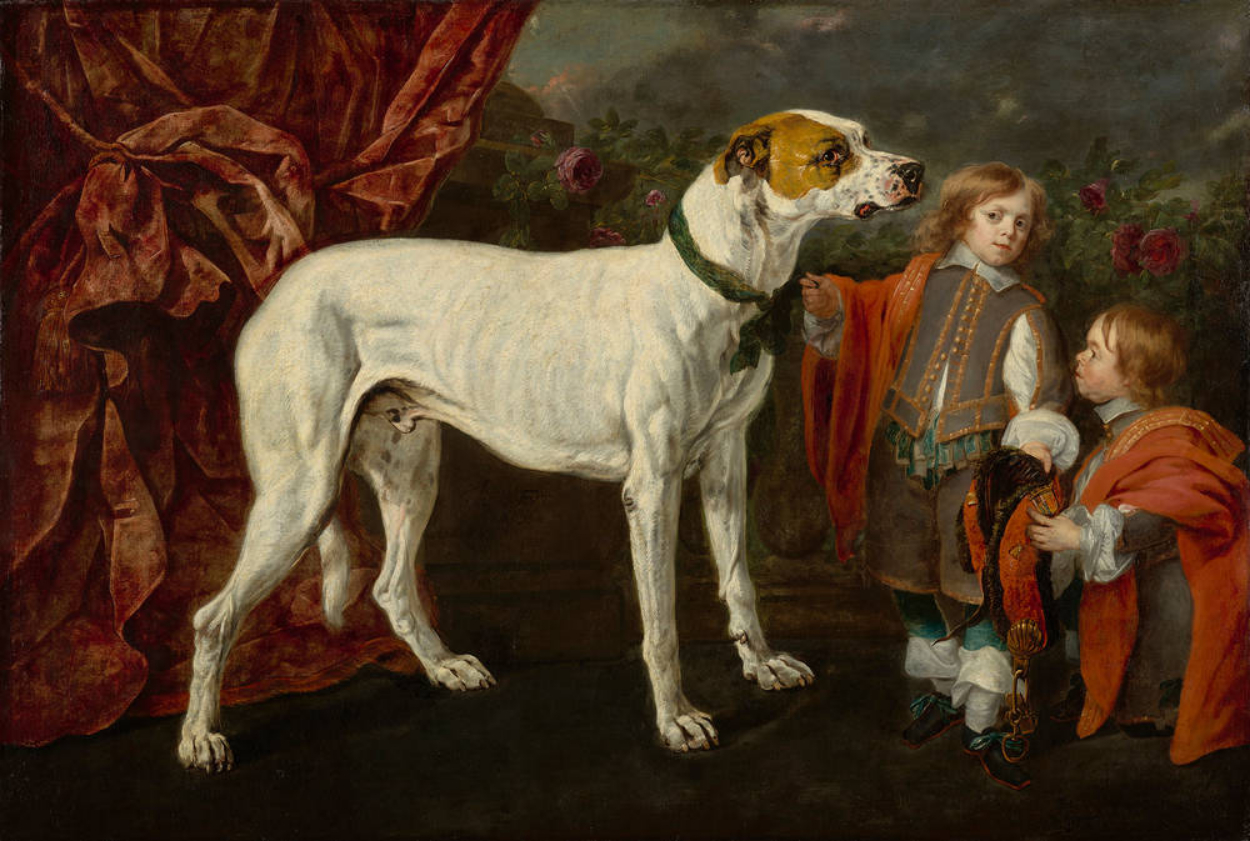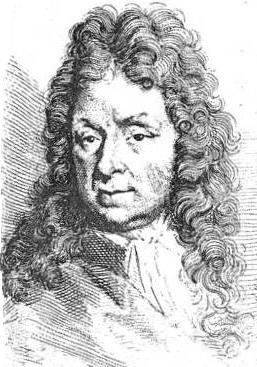|
Animalier
An animalier (, ) is an artist, mainly from the 19th century, who specializes in, or is known for, skill in the realistic portrayal of animals. "Animal painter" is the more general term for earlier artists. Although the work may be in any genre or format, the term is most often applied to sculptors and painters. ''Animalier'' as a collective plural noun, or ''animalier bronzes'', is also a term in antiques for small-scale sculptures of animals, of which large numbers were produced, often mass-produced, primarily in 19th-century France and to a lesser extent elsewhere in continental Europe. Although many earlier examples can be found, animalier sculpture became more popular, and reputable, in early 19th-century Paris with the works of Antoine-Louis Barye (1795–1875), for whom the term was coined, derisively, by critics in 1831, and of Émile-Coriolan Guillemin. By the mid-century, a taste for animal subjects was very widespread among all sections of the middle classes. Promi ... [...More Info...] [...Related Items...] OR: [Wikipedia] [Google] [Baidu] |
Julia Wernicke
Julia Wernicke (August 26, 1860 – October 25, 1932) was a painter and engraver from Argentina. She is known as the first animalist painter from Argentina, and was unique at the time in incorporating exotic animals into her paintings. She paved the way for female artists in Argentina through many firsts, especially within the discipline of engraving. Wernicke was one of the first women to have an individual exhibition of works in Buenos Aires, in 1897; and the first person to have an individual exhibition of engraved etchings in Argentina, in 1909. Family Julia Wernicke was born in Buenos Aires, a daughter of respected educator Robert Heinrich (Roberto Enqrique) Wernicke (May 29, 1826 Kelbra - January 24, 1881, Buenos Aires), and his wife, Ida Augusta Beltz von Hagen. Both were German immigrants. Roberto arrived in Argentina in 1848. They married in 1851 and had several children. * Roberto Enrique Martín Wernicke (Buenos Aires, May 23, 1852 - Buenos Aires, October 22, 1 ... [...More Info...] [...Related Items...] OR: [Wikipedia] [Google] [Baidu] |
Animal Painter
An animal painter is an artist who specialises in (or is known for their skill in) the portrayal of animals. The '' OED'' dates the first express use of the term "animal painter" to the mid-18th century: by English physician, naturalist and writer John Berkenhout (1726-1791). From the early 20th century, ''wildlife artist'' became a more usual term for contemporary animal painters. History Especially in the 17th century, animal painters would often collaborate with other artists, who would either paint the main subject in a historical or mythological piece, or the landscape background in a decorative one. Frans Snyders, a founder of the Baroque animal painting tradition, often provided the animals, and also still lifes of food, for Peter Paul Rubens; a different landscape specialist might provide the background. The paintings by Snyders and his workshop alone typically lack humans, except in kitchen scenes, and usually show a number of animals of different species (or breed ... [...More Info...] [...Related Items...] OR: [Wikipedia] [Google] [Baidu] |
Rosa Bonheur
Rosa Bonheur (born Marie-Rosalie Bonheur; 16 March 1822 – 25 May 1899) was a French artist known best as a painter of animals ( animalière). She also made sculpture in a realist style. Her paintings include ''Ploughing in the Nivernais'', first exhibited at the Paris Salon of 1848, and now in the Musée d'Orsay in Paris, and ''The Horse Fair'' (in French: ''Le marché aux chevaux''), which was exhibited at the Salon of 1853 (finished in 1855) and is now in the Metropolitan Museum of Art in New York City. Bonheur was widely considered to be the most famous female painter of the nineteenth century. Bonheur was openly lesbian. She lived with her partner Nathalie Micas for over 40 years until Micas's death, after which she began a relationship with American painter Anna Elizabeth Klumpke. Early development and artistic training Bonheur was born on 16 March 1822 in Bordeaux, Gironde, the oldest child in a family of artists.Kuiper, Kathleen"Rosa Bonheur" ''Encyclopædia Britannica ... [...More Info...] [...Related Items...] OR: [Wikipedia] [Google] [Baidu] |
Frans Snyders
Frans Snyders or Frans Snijders (11 November 1579, Antwerp – 19 August 1657, Antwerp) was a Flemish painter of animals, hunting scenes, market scenes and still lifes. He was one of the earliest specialist animaliers and he is credited with initiating a wide variety of new still-life and animal subjects in Antwerp. He was a regular collaborator with leading Antwerp painters such as Peter Paul Rubens, Anthony van Dyck and Jacob Jordaens.Matthias Depoorter, ''Frans Snijders'' at barokinvlaanderen Life Snyders was born in as the son of Jan Snijders, the keeper of a wine inn frequented by artists. According to legend the famous 16th-century paint ...[...More Info...] [...Related Items...] OR: [Wikipedia] [Google] [Baidu] |
Edwin Landseer
Sir Edwin Henry Landseer (7 March 1802 – 1 October 1873) was an English painter and sculptor, well known for his paintings of animals – particularly horses, dogs, and stags. However, his best-known works are the lion sculptures at the base of Nelson's Column in Trafalgar Square. Life Landseer was born in London, the son of the engraver John Landseer A.R.A. and Jane Potts. He was something of a prodigy whose artistic talents were recognised early on. He studied under several artists, including his father, and the history painter Benjamin Robert Haydon, who encouraged the young Landseer to perform dissections in order to fully understand animal musculature and skeletal structure. Landseer's life was entwined with the Royal Academy. At the age of just 13, in 1815, he exhibited works there as an “Honorary Exhibitor”. He was elected an Associate at the minimum age of 24, and an Academician five years later in 1831. He was an acquaintance of Charles Robert Leslie, who d ... [...More Info...] [...Related Items...] OR: [Wikipedia] [Google] [Baidu] |
Alexandre-François Desportes
Alexandre-François Desportes (24 February 1661 — 20 April 1743) was a French painter and decorative designer who specialised in animals. Desportes was born in Champigneulle, Ardennes. He studied in Paris, in the studio of the Flemish painter Nicasius Bernaerts, a pupil of Frans Snyders. During a brief sojourn in Poland, 1695–96, he painted portraits of John III Sobieski and Polish aristocrats; after the king's death Desportes returned to Paris, convinced that he should specialise in animals and flowers. He was received by the Académie de peinture et de sculpture in 1699, with the ''Self-Portrait in Hunting Dress'' now in the Musée du Louvre. In 1712–13 he spent six months in England. He received many commissions for decorative panels for the royal châteaux: Versailles, Marly, Meudon, Compiègne and, his last royal commission, for Louis XV at Choisy, 1742. He also did decorative paintings for the duc de Bourbon at Chantilly. Both Louis XIV and Louis XV commissioned p ... [...More Info...] [...Related Items...] OR: [Wikipedia] [Google] [Baidu] |
Nicasius Bernaerts
Nicasius Bernaerts, Monsù Nicasio or simply Nicasius(1620, Antwerp – 1678, Paris) was a Southern Netherlands, Flemish Animalier, painter of animals, hunting pieces and flowers who had an international career in Italy and Paris. He worked for the French court and provided tapestry designs to the Gobelins Manufactory.Nicasius Bernaerts at the Netherlands Institute for Art History Life Bernaerts was born in Antwerp. He studied painting under Frans Snyders, the leading animal painter in Antwerp. After completing his training, he travelled to Italy. Here he was known as 'Monsù Nicasio'. His work was collected in Italy by Ferdinando II de' Medici, Grand Duke of Tuscany.[...More Info...] [...Related Items...] OR: [Wikipedia] [Google] [Baidu] |
Antoine-Louis Barye
Antoine-Louis Barye (24 September 179525 June 1875) was a Romantic French sculptor most famous for his work as an ''animalier'', a sculptor of animals. His son and student was the known sculptor Alfred Barye. Biography Born in Paris, France, Barye began his career as a goldsmith, like many sculptors of the Romantic Period. He first worked under his father Pierre, and around 1810 worked under the sculptor Martin-Guillaume Biennais, who was a goldsmith to Napoleon. After studying under sculptor Francois-Joseph Bosio in 1816, and painter Baron Antoine-Jean Gros, he was in 1818 admitted to the École des Beaux-Arts. But it was not until 1823, while working for the goldsmith Emile Fauconnier that he discovered his true predilection from watching the animals in the Jardin des Plantes, making vigorous studies of them in pencil drawings comparable to those of Delacroix, then modeling them in sculpture on a large or small scale. In 1819 while he was studying at the École des Beau ... [...More Info...] [...Related Items...] OR: [Wikipedia] [Google] [Baidu] |
Jacob Van Der Kerckhoven
Jacob van der Kerckhoven (or Jacques van de Kerckhoven), known in Italy as Giacomo da Castello (1636/1637 – after 1712), was a Flemish painter. After training in Antwerp, he was active in the Veneto region in Italy. He was one of the most prominent still life and animal specialists active in the Veneto territory around the start of the 18th century.Jacob van der Kerckhoven, detto Giacomo da Castello, ''Still life with fruit, parrot and rabbits (Allegory of Autumn)'' at the Civic Art Gallery of Palazzo Chiericati Life Jacob van der Kerckhoven was likely born in Antwerp in 1636 or 1637. He was registered at the Antwerp |
Jan Fyt
Jan Fijt or Johannes Fijt (or Fyt) (19 August 1609 – 11 September 1661) was a Flemish Baroque painter, draughtsman and etcher. One of the leading animaliers of the 17th century, he was known for his refined depictions of animals and his lush hunting pieces.Matthias Depoorter, ''Joannes Fijt'' at Barok in Vlaanderen Life  Jan Fyt was born in as the son of a wealthy merchantLiechtenstein, the Princely Collections, Metropolitan Museum of Art, 198 ...
Jan Fyt was born in as the son of a wealthy merchantLiechtenstein, the Princely Collections, Metropolitan Museum of Art, 198 ...
[...More Info...] [...Related Items...] OR: [Wikipedia] [Google] [Baidu] |
Melchior D'Hondecoeter
Melchior d'Hondecoeter (; 1636 – 3 April 1695), Dutch animalier painter, was born in Utrecht and died in Amsterdam. After the start of his career, he painted virtually exclusively bird subjects, usually exotic or game, in park-like landscapes. Hondecoeter's paintings featured geese (brent goose, Egyptian goose and red-breasted goose), fieldfares, partridges, pigeons, ducks, northern cardinal, magpies and peacocks, but also African grey crowned cranes, Asian sarus cranes, Indonesian yellow-crested cockatoos, an Indonesian purple-naped lory and grey-headed lovebirds from Madagascar. Biography Being the grandson of the painter Gillis d'Hondecoeter and the son of Gijsbert d'Hondecoeter, whose sister Josina married Jan Baptist Weenix, he was brought up in an artistic milieu.Melchior Hondecoeter in Houbra ... [...More Info...] [...Related Items...] OR: [Wikipedia] [Google] [Baidu] |
Carstian Luyckx
Carstian Luyckx, also known as the Monogrammist KL (1623 – c. 1675), was a Flemish painter and draughtsman who specialized in still lifes in various subgenres including flower still lifes, fruit still lifes, fish still lifes, pronkstillevens (sumptuous still lifes), ''vanitas'' still lifes, hunting pieces and garland paintings. He also painted animals and a few genre scenes. After starting his career in Antwerp he is believed to have worked later in France. Life Carstian Luyckx was born in Antwerp in 1623 as the son of David Luycx en Margriet Cloot. He was baptized on 17 August 1623.Carstian Luyckx at the } He studied painting under ... [...More Info...] [...Related Items...] OR: [Wikipedia] [Google] [Baidu] |



